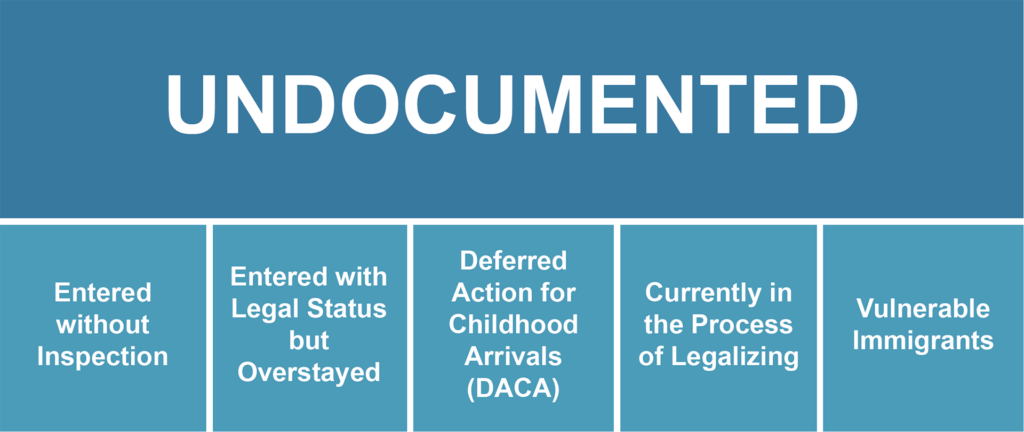Defining Undocumented
Themes/Topics: Law & Policy
Geography: California, National
Audience: Ally, Educator, Undocumented Youth

Who Is Included in the Term “Undocumented”?
We define the term “undocumented” broadly to include all immigrants who reside in the United States without legal status. This includes individuals who:
- Entered Without Inspection (also known as “EWI”)
Individuals who entered the United States without presenting themselves for inspection at an official checkpoint to obtain permission to enter the country (e.g. crossing the border without inspection). - Entered with Legal Status but Overstayed
Individuals who entered the United States with legal status (e.g. student visa) and then remained in the country after their ‘duration of status’ date (found on their I-94) or after their visa expired. - Have or Previously Had Deferred Action for Childhood Arrivals (DACA)
Individuals who have been granted temporary reprieve from deportation through the federal government’s Deferred Action for Childhood Arrivals (DACA) program. Additionally, individuals who had DACA in the past, or will be eligible to request DACA later if the program is fully reinstated. - Are Currently in the Process of Legalizing
Individuals who are pursuing legalization (e.g. U.S. Citizen Spouse Petition, Asylum petition, or U-visa pending, etc.) but currently have no legal status. - Vulnerable Immigrants
Individuals whose immigration status is in ‘limbo’ or puts them ‘at-risk’ for being targeted by immigration enforcement. This could occur due to many factors, such as politics (e.g. TPS program is at risk due to policy shifts), to U-visa recipients who cannot adjust their status due to personal circumstances (e.g. lack of funds, missing a deadline).
Immigrants Rising helps you make decisions based on your potential, not your perceived limits. Visit our website so you can see what’s possible: immigrantsrising.org. Revised 8/2023.
Back to Resources